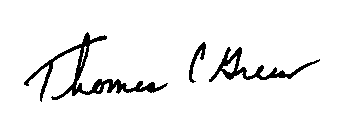GRAD and PROFESSIONAL Schools
Tom Green, Ph.D.

This issue of SEM Quarterly offers a variety of research and perspectives of higher education. We start with an insightful “View from the Top” of the valuable role of information technology (IT) in our higher education enrollment efforts. Drs. Pollock, Schwartz and Buck share the collaborative work from years together at St. Clair Community College. Their emphasis on inclusion of IT professionals in the SEM discussion and planning work is a strong reminder that while we talk about SEM as a “campus-wide” process and mindset, we don’t always practice that and can omit important perspectives and information.
A team of researchers from Iowa present a powerhouse article on identification of student risk factors. All with ties to Iowa State University and from that institution as well as the Iowa Board of Regents, the team investigated issues of entering student achievement with markers of resilience. Non-cognitive variables are not new in higher education research but still appear to be under the radar of many admissions and student success colleagues. This is yet another strong research article that demonstrates the value of combining traditional measures of student readiness with non-cognitive variables to gain far greater insights into student needs. The simplicity of their approach (while not being simple) makes this one of those lightning-bolt moments where one asks, “So why aren’t we doing this?”
Dr. Toni Woolfork-Barnes offers an excellent article on first-year experience courses and seminars (FYE). Some of the outcomes are surprising and others confirm earlier research in this area. By segmenting the students by type (such as undeclared or declared) and by FYE experience (such as seminar, themed or non-themed courses), it reveals that FYE in itself may not improve student success rates. The nuances of “what FYE and for whom” are uncovered in this study, one that should be replicated on other scales or in other areas to determine if these patterns hold for other student groups or modalities. We are especially pleased at the quality of this research, which was part of a capstone project for the SEM-EP courses offered by AACRAO as professional development for SEM leaders.
With thanks for her service to the United States and for her contribution to our SEM literature, retired Navy Captain Barbara Bell provides us with a highly insightful article on the needs of our military veterans and many of the challenges they face in trying to access and succeed in higher education. We continue to hear from our student veterans that they struggle to navigate what should be routine services and that they face additional challenges that are unique to their service and life experiences. Captain Bell goes deeper here to deftly explain the culture shift that occurs when leaving the military culture to that of higher education (almost a complete opposite) and the conflicts that are inherent in trying to make such a large cultural leap in such a short amount of time. For those readers who, like me, never served in the military, this is a must read to help us understand how to better help those are extremely deserving of our best and most effective efforts.

